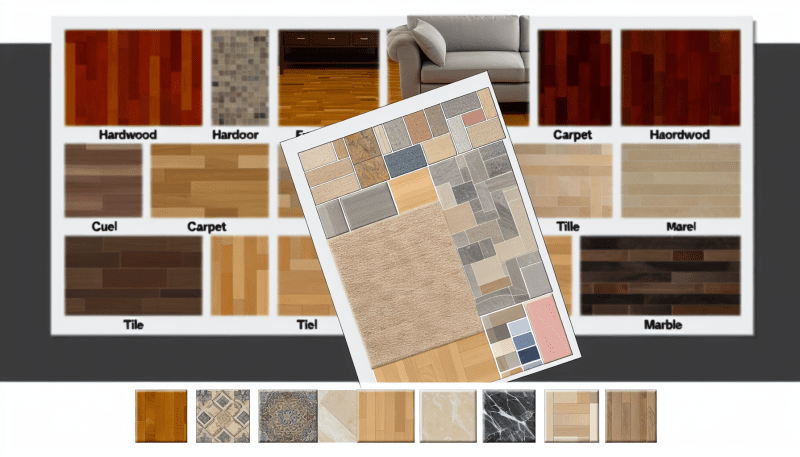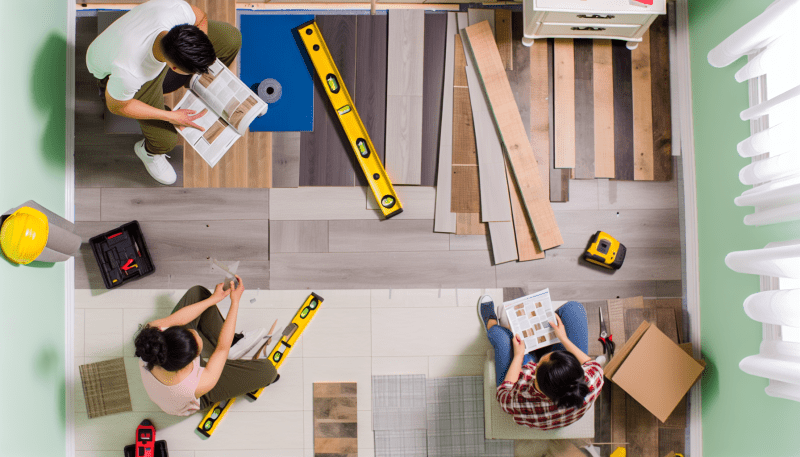Before diving into your flooring project, taking a moment to plan can save you from making those pesky DIY flooring mistakes. It's easy to get caught up in excitement, but a little preparation can make all the difference. Start by gathering all your materials and tools. This helps you visualize the entire process and ensures you’re not running back and forth to the store!
Next, measure your space carefully. Many DIY flooring mistakes happen when people underestimate how much material they need. Use a tape measure and jot down your dimensions. It's helpful to add a little extra to your final numbers to account for mistakes or future repairs.
Consider the type of flooring you want. Each type has its own quirks, whether it's laminate, hardwood, or vinyl. Research the pros and cons of each to find the best fit for your home and lifestyle. You don’t want to end up with flooring that looks great but doesn’t hold up to your daily routine.
Finally, take the time to read through installation instructions or watch a few tutorials. Sometimes, the steps seem straightforward, but having a clear understanding of what to expect can help you avoid common DIY flooring mistakes. With a little planning, you’ll set yourself up for success and enjoy the satisfaction of completing your project without a hitch!
Choose the Right Materials for You
When diving into a DIY flooring project, the materials you choose can make or break your experience. It’s easy to get lost in options, but focusing on what works for your home will save you from common DIY flooring mistakes. Start by thinking about your lifestyle—do you have kids or pets? Are there high-traffic areas to consider? Your flooring should stand up to the demands of daily life.
Here’s a quick rundown of popular flooring materials:
Think about maintenance too. Some materials are less forgiving than others. Picking a flooring option that fits your cleaning routine will help avoid those pesky DIY flooring mistakes. For example, if you’re busy and prefer a low-maintenance floor, go for vinyl or laminates instead of hardwood.
Also, consider the look you want. Are you going for sleek and modern or cozy and vintage? Matching your flooring style to your home’s vibe makes a huge difference! Choosing the right materials not only meets your needs but adds character and comfort to your space. Equip yourself with the right information, and you’ll steer clear of common DIY flooring mistakes.
Measure Twice Cut Once Every Time
When it comes to tackling your own flooring projects, the old saying "measure twice, cut once" is your best buddy. It's all about getting those measurements right to avoid DIY flooring mistakes that can lead to wasted materials and extra costs. It’s super easy to misjudge a space, especially if you’re in a hurry, but taking that little extra time can save you a lot of headaches.
Start off by grabbing a reliable tape measure. It might seem basic, but trust me, it’s crucial! Measure the length and width of the area where you’ll be laying down your flooring. Write everything down to avoid confusion later. And don’t just trust your eyes – double-check those numbers before you make any cuts. This way, you're setting yourself up for success right from the start.
Don’t forget to account for any odd shapes or corners. If your space isn’t a perfect rectangle, you may need to break out the calculator or a graph paper to help visualize the layout. A little planning goes a long way in dodging DIY flooring mistakes. Also, consider the expansion gaps around the edges! These are essential for letting your flooring breathe, especially if you’re using materials like laminate or hardwood.
Once you feel confident in your measurements, it's a good idea to dry fit your pieces before making any cuts. Lay everything out in the space to see how it fits and if any adjustments are needed. You’ll thank yourself later for taking the extra moments to prevent any costly blunders. Remember, it’s all about patience and precision – so don’t rush!
Don’t Skip the Prep Work Steps
When it comes to DIY flooring projects, the prep work can make or break your entire experience. Skipping these important steps can lead to some of the most common DIY flooring mistakes. So, let’s dive into what you should focus on before laying that first tile or plank.
First up, measuring and calculating the space accurately is crucial. Grab a measuring tape and jot down the dimensions of your room. Don’t forget to consider any nooks or crannies that may need special attention. This will help you figure out how much flooring material you actually need, saving you trips to the store and preventing excess waste.
Next, make sure your subfloor is in tip-top shape. This often gets overlooked but a sturdy, smooth surface is essential for a great finish. Take the time to repair any squeaky or uneven areas. You wouldn't want your lovely new floors to start creaking or sagging after a hard day's work!
Lastly, be sure to acclimate your flooring material before installation. Whether it’s hardwood, laminate, or vinyl, giving it time to adjust to the room’s temperature and humidity levels can help prevent warping later on. It may feel like a hassle now, but it’ll pay off in the long run!



